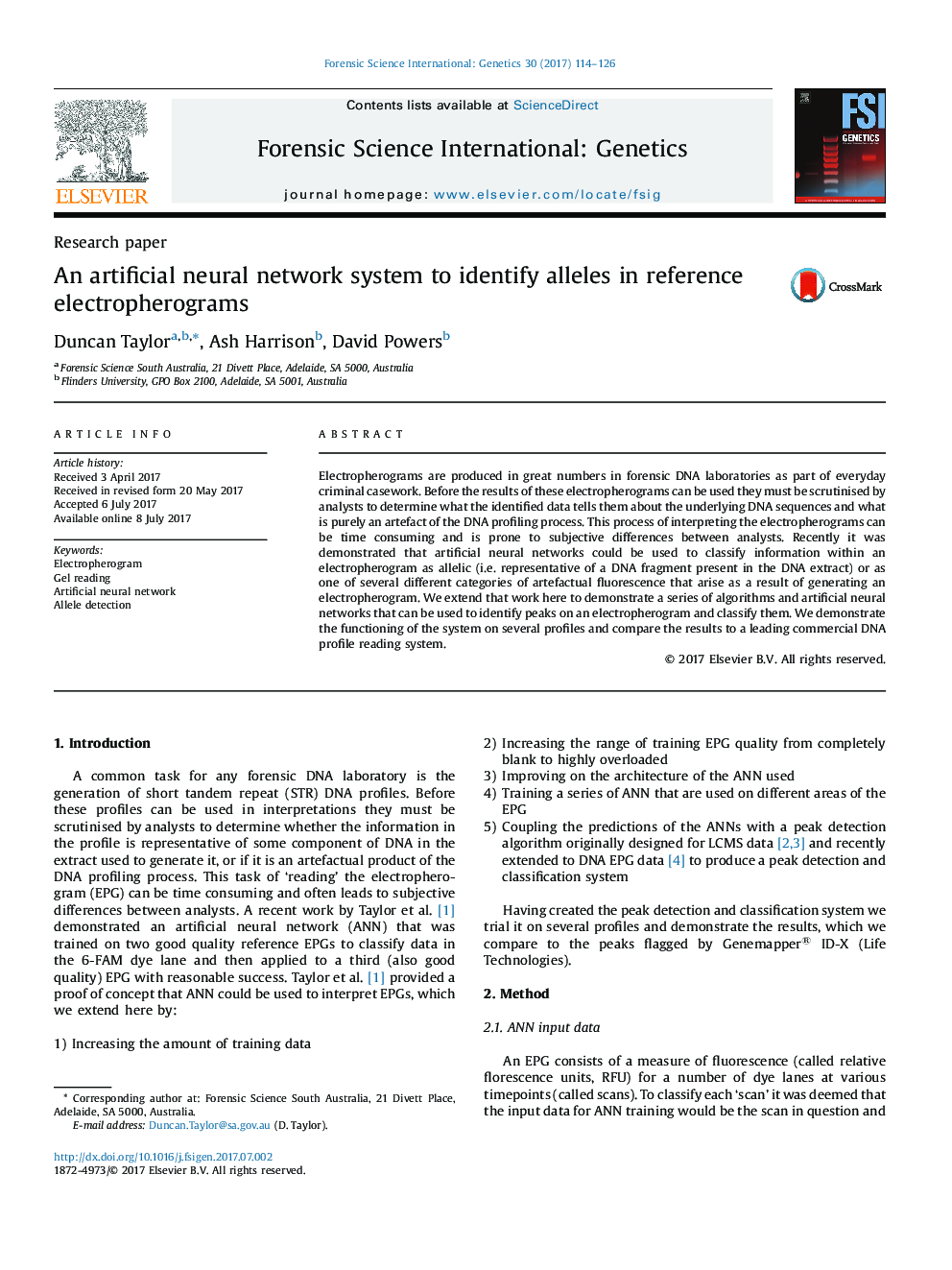| Article ID | Journal | Published Year | Pages | File Type |
|---|---|---|---|---|
| 6462717 | Forensic Science International: Genetics | 2017 | 13 Pages |
â¢We apply artificial neural networks to electrophotographic data to identify features of reference STR DNA profiles.â¢The ANN system, coupled with a peak detection system, had a high degree of accuracy when assigning allelic peak centres.â¢There was a substantial improvement in performance in complex (overloaded) profiles compared to existing solutions.â¢The ANN system removes the need for an analytical threshold.
Electropherograms are produced in great numbers in forensic DNA laboratories as part of everyday criminal casework. Before the results of these electropherograms can be used they must be scrutinised by analysts to determine what the identified data tells them about the underlying DNA sequences and what is purely an artefact of the DNA profiling process. This process of interpreting the electropherograms can be time consuming and is prone to subjective differences between analysts. Recently it was demonstrated that artificial neural networks could be used to classify information within an electropherogram as allelic (i.e. representative of a DNA fragment present in the DNA extract) or as one of several different categories of artefactual fluorescence that arise as a result of generating an electropherogram. We extend that work here to demonstrate a series of algorithms and artificial neural networks that can be used to identify peaks on an electropherogram and classify them. We demonstrate the functioning of the system on several profiles and compare the results to a leading commercial DNA profile reading system.
